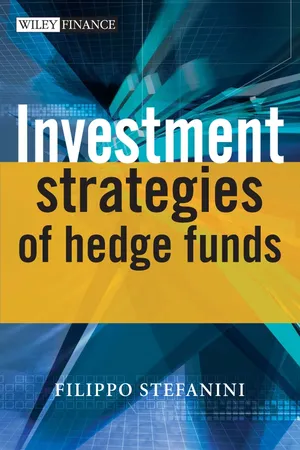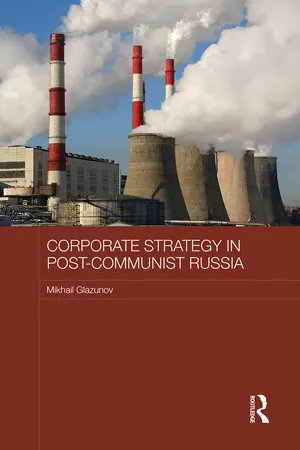Economics
Arbitrage
Arbitrage refers to the practice of exploiting price differences for the same asset in different markets to make a profit. In essence, it involves buying low in one market and selling high in another. This process helps to equalize prices across markets and ensures that assets are priced consistently. Arbitrage opportunities are typically short-lived due to market forces quickly adjusting prices.
Written by Perlego with AI-assistance
3 Key excerpts on "Arbitrage"
Learn about this page
Index pages curate the most relevant extracts from our library of academic textbooks. They’ve been created using an in-house natural language model (NLM), each adding context and meaning to key research topics.
- eBook - ePub
- Frank J. Fabozzi, Frank J. Fabozzi(Authors)
- 2012(Publication Date)
- Wiley(Publisher)
Arbitrage is the simultaneous buying and selling of an asset at two different prices in two different markets. The Arbitrageur profits without risk by buying cheap in one market and simultaneously selling at the higher price in the other market. Such opportunities for Arbitrage are rare. In fact, a single Arbitrageur with unlimited ability to sell short could correct a mispricing condition by financing purchases in the underpriced market with proceeds from short sales in the overpriced market. This means that riskless Arbitrage opportunities are short-lived.Less obvious Arbitrage opportunities exist in situations where a package of assets can produce a payoff (return) identical to an asset that is priced differently. This Arbitrage relies on a fundamental principle of finance called the law of one price , which states that a given asset must have the same price regardless of the location where the asset is traded and the means by which one goes about creating that asset. The law of one price implies that if the payoff of an asset can be synthetically created by a package of assets, the price of the package and the price of the asset whose payoff it replicates must be equal.When a situation is discovered whereby the price of the package of assets differs from that of an asset with the same payoff, rational investors will trade these assets in such a way so as to restore price equilibrium. This market mechanism is founded on the fact that an Arbitrage transaction does not expose the investor to any adverse movement in the market price of the assets in the transaction.For example, consider how we can produce an Arbitrage opportunity involving three assets A, B, and C. These assets can be purchased today at the prices shown below, and can each produce only one of two payoffs (referred to as State 1 and State 2) a year from now: - eBook - ePub
- Filippo Stefanini(Author)
- 2010(Publication Date)
- Wiley(Publisher)
2ArbitrageArbitrage strategies are very popular in the hedge fund world, but before turning to their description, it is necessary to clarify the specific meaning of the term “Arbitrage” in this context.There is no free lunch. Old Stock Exchange adageFrom an academic point of view, an Arbitrage stands for a risk-free transaction that generates an instant profit: a theoretical example of Arbitrage is the concurrent purchase and sale of the same security on different markets at different prices. By buying the same security at a lower price and selling it right away at a higher price, an Arbitrageur earns an immediate profit at no risk, saving the settlement and delivery risks.But in the hedge fund business the term Arbitrage has developed a different sense, in that it does not refer to risk-free positions, but rather to positions involving risks other than the market risk. Hedge fund Arbitrages in practice are directional positions on spreads: if the spread widens or narrows as anticipated, the manager makes a profit; otherwise he suffers a loss. Therefore we must not be misled by the word Arbitrage: a hedge fund may well suffer a loss even when it has constructed an Arbitrage position - what it takes, is for the spread to widen or narrow contrary to predictions.An Arbitrage opportunity may appear when given technical, geographical, legal or administrative barriers interfere with the correct interaction between two markets trading the same security, thus preventing the security from having the same price on both markets.In a perfect world, there would be no Arbitrage opportunities, and in the real world most Arbitrage opportunities tend to disappear quickly, unless there are high transaction costs that hamper frequent Arbitrages. Over time, inevitably, other Arbitrageurs will get organized to take advantage of Arbitrage opportunities, narrowing down the price difference until it disappears. Arbitrage opportunities draw various Arbitrageurs to the market, and they will erode each other’s profits by competing against one another. Once again, to make a return it is necessary to take on risks! - eBook - ePub
- Mikhail Glazunov(Author)
- 2016(Publication Date)
- Routledge(Publisher)
Despite the fact that in the late 1990s the speed of financial transfers between banks increased significantly, barter transactions were very popular because every agent who decides to withdraw from the system of barter would have to bear transformation costs in order to break the established connection with the other partners, find new companions and be ready to come under the scrutiny of the tax authorities (ibid.). Also, recall that for some participants barter exchange makes it relatively easy to increase current assets and make opaque financial transactions.Arbitrage in the absence of control over the bureaucracy may also be an institutional trap. High levels of autonomy of the bureaucracy from citizens together with the administrative resources, blurring of moral standards and the weakness of the mechanisms of state and public control are fundamental factors contributing to the establishment of Arbitrage as an institutional trap. This means that without this type of Arbitrage economic systems may be less effective than with Arbitrage. Due to the coordination effect, the more popular Arbitrage becomes, the higher the number of firms exploiting Arbitrage and the lower the Arbitrage transaction costs. Moreover, people become more tolerant of this type of Arbitrage as its prevalence grows.By improving, Arbitrage becomes a hierarchical structure. The massive use of this Arbitrage scheme leads to the appearance of the appropriate service system_ developers and consultants appear who design and implement new Arbitrage schemes. The effect of training, as usual, is the complemented linkage effect: there are specific forms of business with distorted reporting; Arbitrage mates tightly with corruption.Arbitrage is embedded in the system of other rules and regulations, and a refusal to follow these rules may result in a chain of other changes. Therefore a company's exit from Arbitrage strategy is associated with high costs of transformation. Domination of Arbitrage generates a specific configuration of the organisational structure of the company and its functionally oriented departments. As the result, this strategy starts the process of re-functionalisation of the firm, which assumes status changes of individual production departments, working groups and staff.


